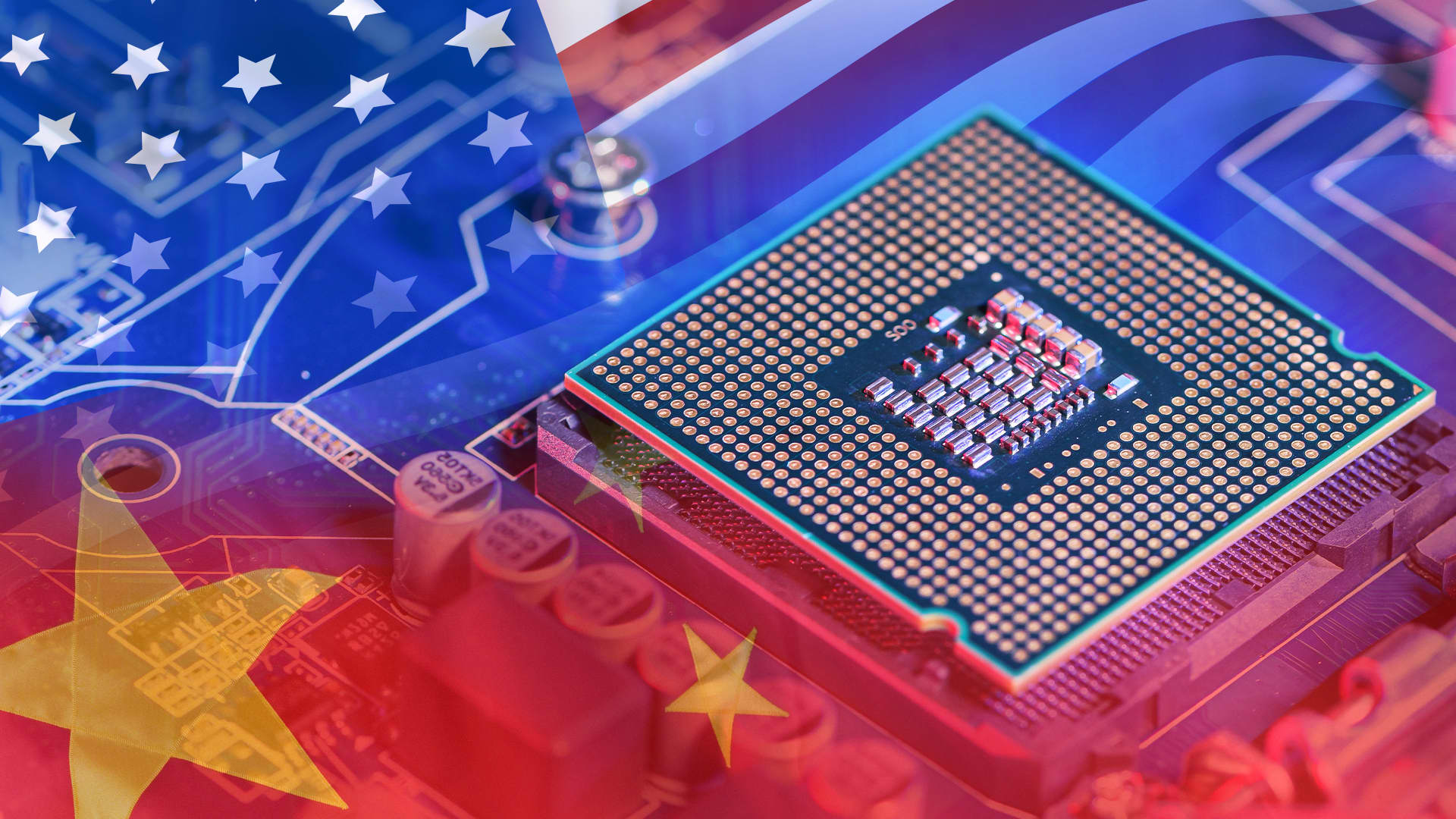Smartphones. Cars. Toasters. Fighter jets. While vastly different on the outside, all four items share something similar on the inside: semiconductors.
“There’s no tech industry without semiconductors,” said Stacy Rasgon, senior semiconductor analyst at Bernstein Research.
Semiconductors represent a $574 billion industry globally and are on pace to cross the trillion-dollar mark by the end of the decade. The industry has been caught in the crosshairs between the U.S. and China, two of the world’s largest economies.
The U.S., which leads the world in global semiconductor market share, recently issued sweeping restrictions on the sale of advanced chips and chipmaking equipment to China, in an attempt to restrict Beijing’s access to critical technologies. The Biden administration has said the export controls are aimed in part at preventing the use of American-made chips in China’s military. China, meanwhile, has accused the U.S. of abusing export restrictions to impede the country’s technological advances.
“We cannot allow China to have our most sophisticated semiconductor chips for use in the Chinese military,” U.S. Secretary of Commerce Gina Raimondo said in an interview with CNBC on Oct. 30, 2023. “That’s where we’ve drawn the cut line.”
Watch the video above to find out more about how the semiconductor industry became the centerpiece of a technological tug-of-war between the U.S. and China, and what the potential implications are for companies caught in the middle of it all.

